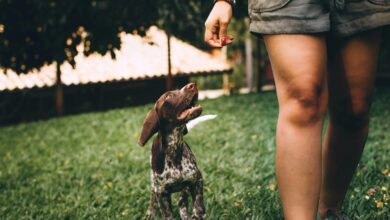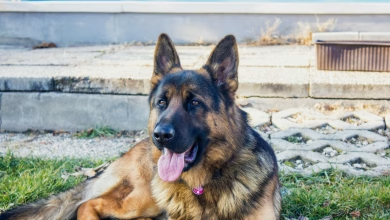
The art of nail trimming, might not be the most glamorous part of pet ownership, but it’s an essential aspect of pet grooming that often gets overlooked. Those tiny claws need regular attention to ensure your pet’s comfort and overall paw health. In this comprehensive guide, we will delve into the art of nail trimming, explore the best tools for the job, and provide you with expert tips to ensure your furry friend’s paws are always in top-notch condition.
Table of contents
Understanding the Importance of Nail Trimming
Before we jump into the “how-to” of nail trimming, let’s take a moment to understand why it’s crucial for your pet’s well-being:
Comfortable Movement
Imagine wearing shoes several sizes too small. Uncomfortable, right? Long nails can have a similar effect on your pet, making it challenging for them to move freely. Trimming their nails ensures comfortable mobility.
Preventing Injuries
Overgrown nails can easily get caught in carpets, furniture, or other surfaces. This can lead to painful injuries as well as damage to your home. Regular nail trimming helps prevent these accidents.
Maintaining Paw Health
Your pet’s paw health extends beyond just their nails. Regular nail maintenance is a part of the overall care package that prevents ingrown nails, infections, and other paw-related problems.
Now, let’s explore the best practices for nail trimming.
How to Trim Your Pet’s Nails
1. Gather Your Supplies
Why it matters: Having the right tools at your disposal ensures a safe and efficient nail trimming session.
How to do it:
- Pet Nail Clippers or Grinder: Choose the tool that suits your comfort level and your pet’s nail type. Clippers are straightforward, while grinders offer precision.
- Styptic Powder: Accidents can happen. This powder is a lifesaver, stopping bleeding in case you accidentally cut too close to the quick.
- Treats and Positive Reinforcement: Reward your pet for their cooperation and good behavior during the process. It makes the experience more enjoyable for both of you.
2. Choose the Right Time and Place
Why it matters: A calm environment and a relaxed pet make nail trimming a breeze.
How to do it:
- Quiet Space: Pick a quiet and well-lit room with minimal distractions. Avoid areas where your pet feels trapped, like small closets.
- Relaxed Pet: Ensure your pet is calm before starting. Consider a short play session or exercise to tire them out. An exhausted pet is often a more cooperative one.
3. Understand Nail Anatomy
Why it matters: Knowing where the quick (the blood vessel) is located is crucial to avoid painful accidents.
How to do it:
- Inspect the Nails: Examine your pet’s nails, looking for the pinkish quick. In pets with black nails, the quick is not visible, so extra caution is necessary.
- Trim Conservatively: Start by trimming a small portion of the nail and gradually work your way back. Stop when you see a pinkish or grayish oval in the center.
4. The Nail Trimming Process
Why it matters: Proper technique ensures a safe and painless experience.
How to do it:
- Position Your Pet: Place your pet in a comfortable position, either on your lap or a stable surface. You want them to feel secure.
- Hold Their Paw Gently: Hold your pet’s paw securely but gently, so they don’t pull away. It’s essential to maintain control.
- Trim at a 45-Degree Angle: With clippers or a grinder, trim the nail at a 45-degree angle, avoiding the quick. The angle ensures a clean cut and reduces the risk of splintering.
- Smooth the Edges: Use a file or the grinder to smooth any rough edges. This prevents the nails from catching on surfaces.
5. What to Do If You Cut the Quick
Why it matters: Accidents can happen, so it’s crucial to be prepared.
How to do it:
- Stay Calm: If you cut the quick and your pet starts bleeding, stay calm. Your pet can sense your anxiety.
- Styptic Powder: Apply styptic powder to the bleeding nail to stop the bleeding. If you don’t have styptic powder, use flour or cornstarch as an alternative.
- Offer Comfort: Comfort your pet and offer treats to reassure them. This helps rebuild trust and makes future nail trimming sessions less stressful.
6. Regular Trimming Schedule
Why it matters: Consistency is key to keeping your pet’s nails at the right length.
How to do it:
- Establish a Schedule: Depending on your pet’s activity level and nail growth, create a trimming schedule. For most dogs, once a month is sufficient. Cats may require less frequent trimming.
- Check All Nails: Don’t forget dewclaws (if present) and back paws, which may require less frequent trimming. A comprehensive approach ensures all nails are in good shape.
Tips for Pet Nail Trimming Success
- Start Early: Get your pet accustomed to nail trimming when they are young, so they grow up comfortable with the process. Reward them for their cooperation.
- Positive Reinforcement: Reward your pet with treats and praise throughout the process. Positive associations make nail trimming less stressful.
- Take Breaks: If your pet becomes anxious or agitated, take short breaks to calm them down. Rushing through the process can lead to accidents.
- Professional Help: If you’re unsure or uncomfortable trimming your pet’s nails, seek help from a professional groomer or veterinarian. They have the expertise to handle any challenges.
Preventing Paw Problems
While nail trimming is essential, here are some additional tips for maintaining your pet’s paw health:
- Moisturize Pads: Keep your pet’s paw pads moisturized, especially during dry or hot weather. Paw balm or specialized moisturizers are available for this purpose.
- Monitor for Licking or Chewing: Excessive licking or chewing of paws may indicate a problem. Consult your vet if you notice this behavior.
- Regular Paw Checks: Make it a habit to regularly inspect your pet’s paws for any signs of injury, cracked pads, or foreign objects. Prompt attention to these issues can prevent more significant problems.
The Art of Nail Trimming
The art of nail trimming, might not be the most exciting part of pet ownership, but it’s undoubtedly one of the most important. With the right tools, knowledge, and a gentle touch, you can ensure that your pet’s paws are in top shape. Regular nail maintenance not only keeps your pet comfortable but also contributes to their overall health and well-being. So, embrace the art of nail trimming and keep those paws happy!








